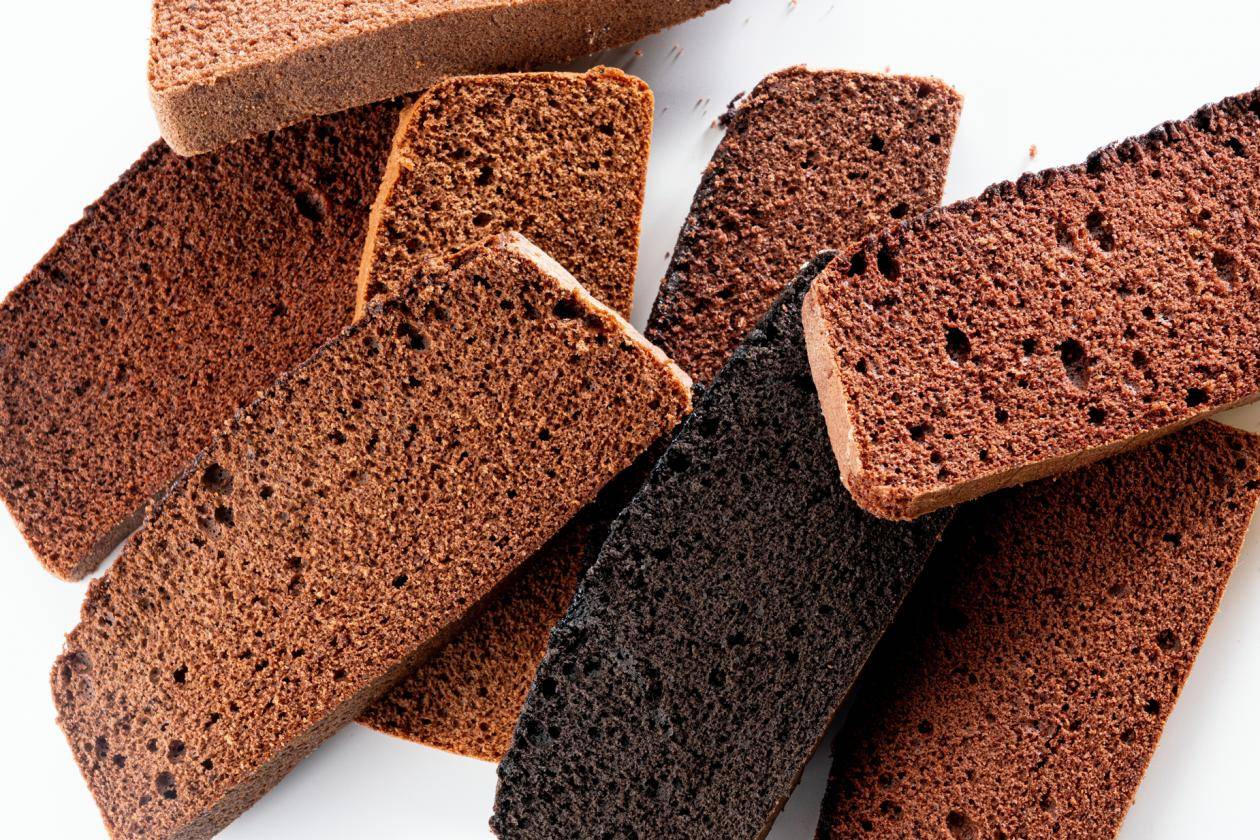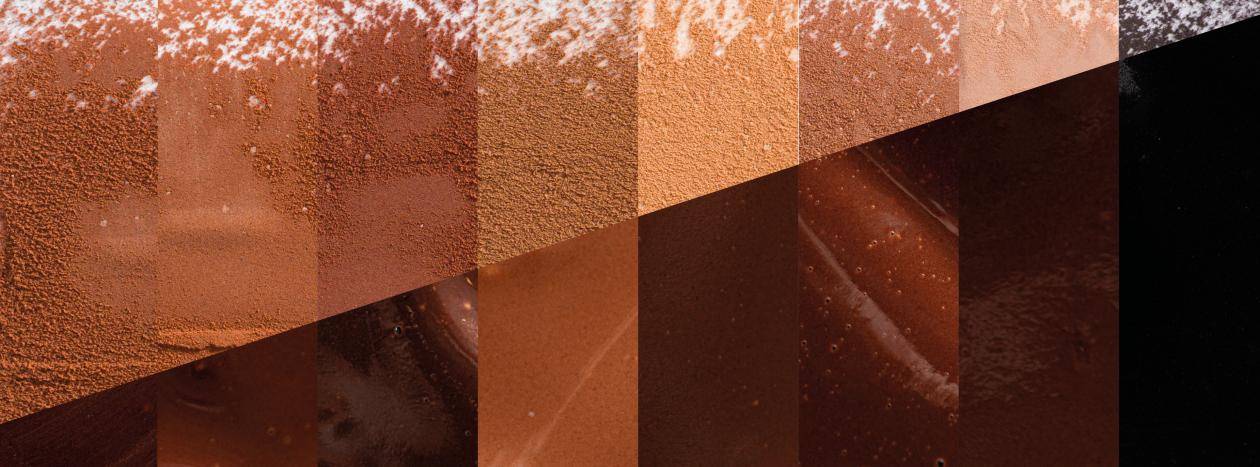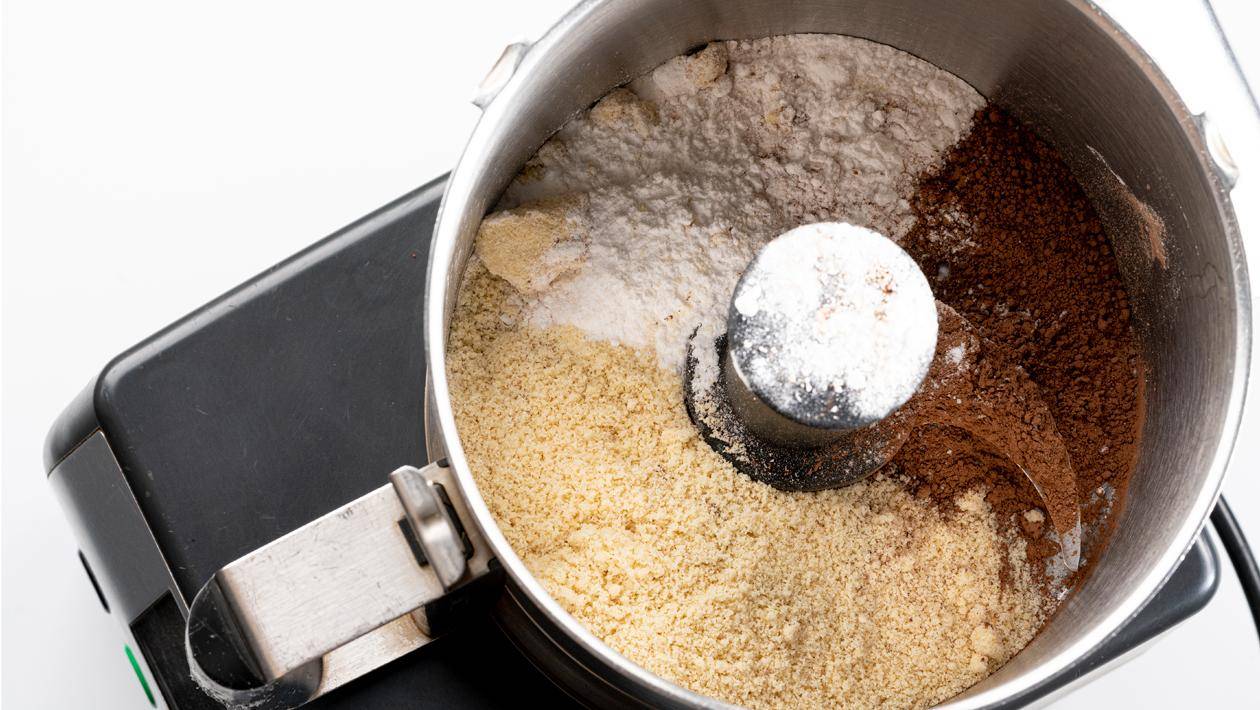FAQ Cacao Powders

Claim & Denomination
-
What is the difference between cacao and cocoa powder? Are cocoa powder and cacao powder the same?
There is no global definition of cacao and cocoa – it is not regulated by any food authorities. They are often used as synonyms and the difference between the two are based on subjective perceptions. To celebrate the 100% pure and more premium perception of this product unknown by Chefs, the expression “cacao powder” is used in all the Cacao Barry documents.
-
What is the difference between cacao powder and chocolate powder?
Chocolate powder is often mistaken for cacao powder. The difference between cacao powder and chocolate powder lies in the composition. Chocolate powder or powdered chocolate is a mixture of cacao powder and sugars. Sometimes other ingredients are added such as milk powder. EU directive 2000/36 mentions that the mixture must contain “not less than 32% cacao powder”.
-
What is the difference between alkalised cacao powder (or “Dutched” powder) and natural cacao powder?
Natural cacao powders are non-alkalized powders. The slight natural acidity of the cocoa beans is maintained in the final powdered product. This cacao powder category enables the usage of “natural” claims. Alkalised or “Dutched” powders are treated with an alkaline solution such as potassium carbonate for 90% of our Cacao Barry cacao powders. When mixing the cocoa nibs with alkaline agents during the “Dutching” or “Alkalization'' process, the pH of the nibs increases, which reduces the natural acidity of the cocoa. The alkalization process also darkens the colour (reddish-brown hues), enhances the flavours (stronger cocoa notes) and has an impact on the dispersibility and wettability of the final alkalised cacao powder.
-
Are the Cacao Barry cacao powders sustainable?
Yes, the whole collection is made from sustainably sourced cacao beans. Learn more on the Cocoa Horizons Foundation here.
-
Can we consider the Cacao Barry cacao powders sugar free?
Yes, they are 100% pure cacao. No sugar added.
-
Can we consider the Cacao Barry cacao powders gluten free?
Yes, they are 100% gluten free.
-
Are these cacao powders GMO free?
Yes, the Cacao Barry cacao powders are GMO free.
-
Are the Cacao Barry cacao powders Kosher Pareve?
Yes, the Cacao Barry cacao powders are Kosher Pareve certified. Contact your account manager to get the technical sheet.
-
Are the Cacao Barry cacao powders Halal?
Yes, the Cacao Barry cacao powders are Halal certified (except Légère 1%). Contact your account manager to get the technical sheet.
-
Are the Cacao Barry cacao powders dairy free? Are these cacao powders suitable for vegetarian and vegan diets? Can we claim the Cacao Barry cacao powders vegan?
Our products are lactose free. They are made without the addition of dairy. However they are not dairy free certified. The "dairy free" claim implies that all our suppliers are also "dairy free". Today it is not the case even if our cacao powder plant located in Louviers is dairy free. We can issue DF certification if needed.
-
Are the Cacao Barry cacao powders healthy?
The Cacao Barry pure cacao powders are a source of proteins, vitamins (B2, Calcium), and minerals (copper, iron, zinc, magnesium, phosphorus). To claim any specific allegation, you must recalculate systematically the final nutritional values of your end product.
-
Alkali regulation - What to declare on packaging?
There are different declaration requirements depending on the level of alkalization and the way the powder is sold in your country as per below (EU regulation):
< 7 % Alkali content:
- labeling for cacao powder sold in BtoB: cocoa powder, acidity regulator: Exxx
- labeling for cacao powder as an ingredient in a consumer product BtoC: cocoa powder
- labeling for cacao powder sold as BtoC product (cocoa powder sold as such to consumer): cocoa powder, acidity regulator: Exxx
-
Are the bags of the new collection of Cacao Barry cacao powders recyclable & resealable?
Yes, all the bags of the Cacao Barry cacao powders are recyclable and resealable with a zip closing, designed consciously to be more practical while reducing waste. More information here.

Process & Ingredients
-
Where does Cacao Barry cacao powders come from?
We source the finest quality cacaofruits from different regions to ensure premium colour and flavour sensory. The origin is indicated on each product page of our website.
-
How does the flavour of the cacao powder change through the varieties of cacao powders?
Similar to any other fruit or wine, the terroir impacts the flavour notes of the cacaofruits used for our Cacao Barry cacao powders.
-
How is cacao powder made?
Discover the cacao farming and the cacao processing processes in The Cacao Alphabet book
-
Is there an impact of the gelling of the cocoa starch and does it have an impact on the applications?
No. The gelling part passes into the cocoa butter during the pressing step.
-
What is the shelf life of Cacao Barry cacao powders?
24 months.
-
What are the storage recommendations of our cacao powders?
Store the product in a clean, dry (relative humidity max. 70 %) and odourless environment. Storage temperature: 12 - 20 °C / 54 - 68 °F.
-
What cacao powder is best for baking (e.g. brownies or chocolate cake)?
The properties of the biscuits may be influenced by the alkalization level and fat content level of the cacao powders used. Learn more on the chefs & cacao experts’ tips in the Cacao Alphabet book.
-
Does the colour of the cacao powder continue to change after baking?
No, after baking your cake or sponge cake with cacao powder, the colour remains stable (with a proper storage).
-
What cacao powder is best for sponge cakes?
Our chefs and cacao experts strongly recommend using low fat powders (10-12%). Increasing fat amount in such recipes results in less batter volume at the end of the process. Learn more on the chefs & cacao experts’ tips in the Cacao Alphabet book.
-
What cacao powder is best for dairy desserts?
Alkalised cacao powders react with gelling agents and impact the texture of the recipe. Indeed, high pH from alkalised cocoa powders will affect gelling agents as it will modify the caseins property of the milk. This protein (casein) modification will affect the reaction with the gelling agent and minimise the gelification.
-
What cacao powder is best for ice-cream?
Ice cream made with high fat cacao powder shows a higher overrun and a longer melting time than a low fat content powder. It allows better stability. Learn more on the chefs & cacao experts’ tips in the Cacao Alphabet book.
Nature Cacao
-
How is Nature Cacao processed?
The process is a trade secret.
-
Is it possible to get to the same dark brown colour level of Nature Cacao by using more standard natural cacao powder?
No. Even if we could get a darker brown colour by increasing the % of natural powders used in the recipe it would risk the functionality of the powder in application.
Légère 1%
-
What cacao powder is best for macaron or meringue?
Thanks to its very low-fat content (less than 1%), the cacao powder Légère 1% is the perfect solution for aerated bakery recipes (volume +20% versus a standard cacao powder) and low-calorie applications.
-
How is Légère 1% processed?
The process to get this defatted cacao powder is similar to the one of coffee decaffeination.
Décor Cacao
-
What cacao powder is best for tiramisu?
A unique creative journey. Thanks to its exceptional insoluble property, the Décor Cacao powder allows for a long-lasting beautiful cocoa finishing touch on your creations which have a high moisture content (up to 3 weeks in the fridge).
-
How is Décor Cacao made?
The process is a trade secret.
Noir Intense
-
What cacao powder is best for black bakery recipes (cookies, donuts…)?
Use the cacao powder Noir Intense! It is the perfect solution to darken your bakery & pastry creations thanks to its shiny deep black charcoal colour cacao powder.

Technical Insights & Applications
-
What is the difference between extrinsic and intrinsic colour of cacao powder?
The colour of the cacao powder as such is the dry or extrinsic colour while the intrinsic colour corresponds to the colour of your final recipe made with the cacao powder. We strongly recommend always benchmarking colour in your recipe (intrinsic colour) versus the dry (extrinsic colour) colour.
-
How to read the colour of the Cacao Barry cacao powder on your technical sheet?
The colour indicated on the Cacao Barry technical sheet is the intrinsic colour, meaning the colour of the powder in the application (not dry).
-
What is the fat content of cacao powder?
The fat content is the amount of residual cocoa butter in the cacao powder and is determined by the pressing time and the pressure applied. Cocoa butter represents about half the weight of the cocoa nib. During the pressing step, the fat is partially removed from the fine cocoa liquor. A longer pressing time gives a low fat cacao powder, a shorter pressing time a high fat cacao powder. Learn more on how the fat content of the cacao powder may impact the colour and the texture of your recipe in the Cacao Alphabet book.
-
How is the pH of cacao powder determined?
The pH of natural cacao powders depends on the acidic components of the cocoa beans. In general, the pH of this category is between 5.0 and 6.0. The pH of alkalised cacao powders is determined by the amount and type of alkalis used during the alkalization step. In general, the pH of alkalinized powders is between 6.1 and 8.2. Learn more on how the pH of the cacao powder selected may affect your recipe in the Cacao Alphabet book.
-
How does the water absorption capacity of the cacao powder impact the recipe? Can you replace flour with cacao powder in your recipe?
Cacao powders influence the water absorption. The cacao powder competes with the other ingredients in the recipe to absorb the available water. Unlike flour which absorbs up to 40% of its weight, the cacao powder can absorb moisture up to 100% of its own weight. To obtain optimal results, adjust your recipe with water or eggs. Learn more on how the water absorption capacity of the cacao powder selected may impact your final creation in the Cacao Alphabet book.
-
Does the cacao powder continue to absorb over time?
No. The moisture content of the recipe will change but it is not necessarily related to the cacao powder used.
-
How does the fineness of cacao powder affect your finished product?
The finer a cacao powder, the better the flavour release will be. Higher fineness brings a better & smoother mouth feel. High fineness decreases the risk of sedimentation. When cocoa particles are bigger, a product like chocolate or a dairy dessert, will be perceived as “sandy” or “gritty”. It also has a visual effect: high fineness brings darker and consistent colour to recipes through the absence of black spots. .
-
How does the dispersibility of cacao powder impact your recipe?
The more dispersible the cacao powder is, the less decantation we have. Natural cacao powders are less dispersible than alkalized powders. The pH of the cacao powder indeed improves the wettability and makes it easier to blend in milk.
